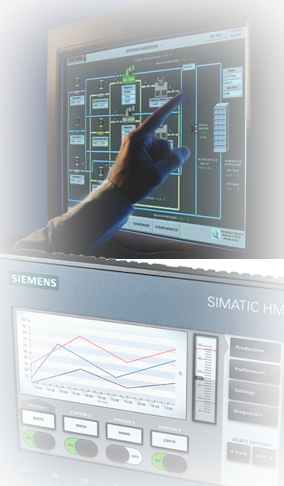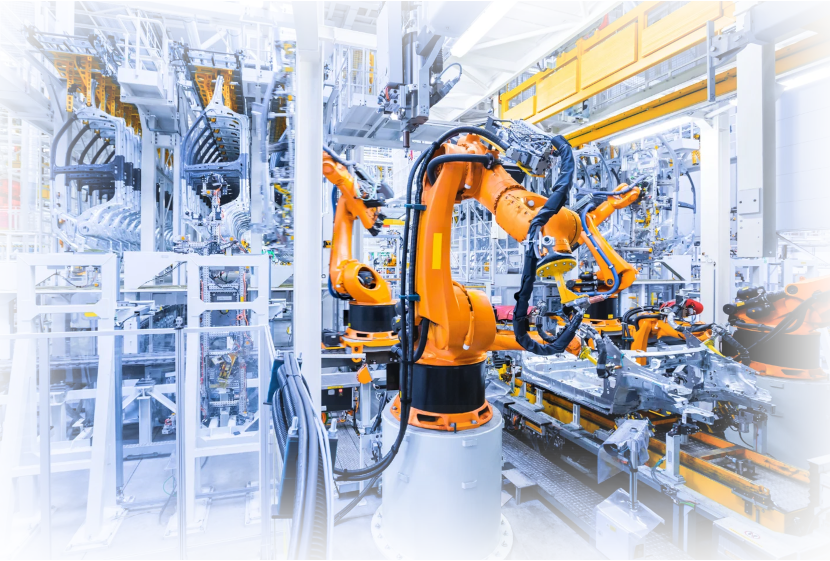HMI for industrial motor control components like touchscreens, push-button panels, and mobile apps help operators communicate with machines and control systems.
Need HMI Automation Products in Motor Control?
Get HMI QuoteUnderstanding Human-Machine Interfaces (HMI)
HMI platforms allow operators to communicate with machines and control systems. These interfaces can include touchscreens, push-button panels, and mobile apps. Over time, HMI technology has grown substantially, becoming more user-friendly and powerful, especially in industrial applications.
Role of HMIs in Motor Control Systems
HMI for industrial motor control systems are important for starting, stopping, and controlling motor speed and torque. HMIs play an important role in the integration of motor control components like motor starters, Programmable Logic Controllers (PLCs), and Variable Frequency Drives.
Motor Starters: HMIs offer a straightforward interface for managing motor starters, allowing operators to start and stop motors with a single touch. This decreases manual labor and lowers the danger of error.
PLCs: HMIs when combined with PLCs, HMIs enable real-time monitoring and control of motor activities. You can quickly configure and modify motor control parameters using the HMI, assuring smooth operation and quick corrections.
Variable Frequency Drives: HMIs provide precise control over motor speed and torque in Variable Frequency Drives (VFDs). They allow operators to change VFD settings on the fly, resulting in superior efficiency and energy economy.
Simplifying Operator Interface with HMI for Industrial Motor Control
HMI for industrial motor control is intended to make operator interactions as simple as possible. User-friendly interfaces with clear, intuitive controls aid in the learning process for new operators. Real-time data visualization enables you to view crucial motor characteristics at a glance, allowing you to make informed decisions quickly.
Customizable controls enable you to tailor the HMI to your specific requirements and preferences, improving both usability and productivity. HMIs simplify motor control chores by offering a consistent and easy-to-use interface, resulting in smoother operations.
Case Studies and Real-World Applications include a manufacturing plant integrating HMIs with motor starters and VFDs to streamline production processes. Operators can control multiple motors from a central HMI, monitor real-time performance, and adjust settings to optimize efficiency.
Or Oil and Gas Operations where remote motor control integrated with PLCs allow operators to troubleshoot motor control systems remotely, reducing on-site presence and increasing safety.

Future Trends in HMI for Motor Control
The future of HMI technology in motor control looks promising, with improvements that interact with the Internet of Things (IoT) and Industry 4.0. These interfaces will allow even greater data accessibility and control.
Artificial intelligence (AI) and machine learning (ML) are expected to improve predictive maintenance capabilities, lowering downtime and increasing reliability.

Test Your HMI Motor Control Knowledge
Human Machine Interfaces Transform Industrial Control
In this post, we looked at how integrating Human-Machine Interface (HMI) for Motor Control may transform your operations. By seamlessly linking HMIs to Motor Starters, you can easily start and stop motors, reducing human errors. When combined with Programmable Logic Controllers (PLCs), HMIs provide real-time monitoring and control, allowing you to quickly and efficiently change motor parameters.
HMIs for Variable Frequency Drives (VFDs) provide precise speed and torque control, which improves performance and efficiency. Overall, HMIs benefit Industrial Motor Control Systems by simplifying operator interactions, increasing efficiency, and improving user experience. Adopting HMI technology can result in smoother, more efficient operations in any industrial sector.
